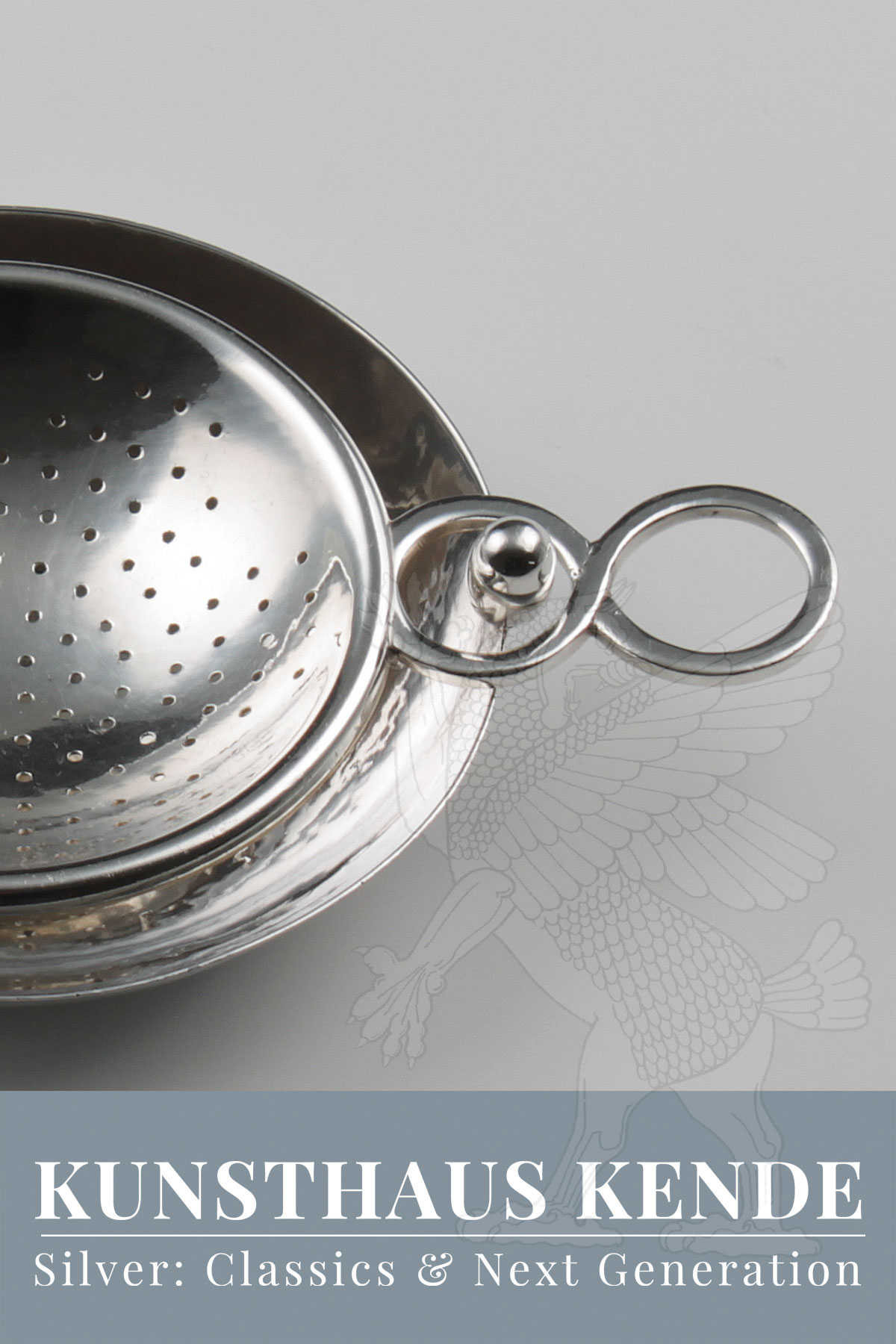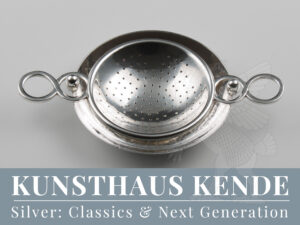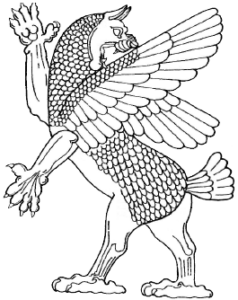Item number: 59023
A rare Art Déco 835 grade silver tea strainer with drip pan,
by Paula Straus for Bruckmann & Söhne circa 1925
The body of the drip pan and the tea strainer covered by a subtle martelé. The ornamentally curved handles fixed over two spherical moulds which are attached to the rim of the drip pan. Very good, authentic condition with original surface.
There is a strong probability the tea strainer was designed by Paula Straus before she was employed by Bruckmann & Söhne and this strainer is one of the first designs of her being executed by the Heilbronn silverware factory. It is also illustrated in her private photo album, which she compiled in 1938 (cf. the contemporary photograph in: FrauenSilber. Paula Straus, Emmy Roth & Co. Silberschmiedinnen der Bauhauszeit. Exhibition catalogue of the Badisches Landesmuseum Karlsruhe 2011, Fig. p. 41).
Several artworks by Paula Straus can be found in the Bröhan Museum, Berlin and the Württembergisches Landesmuseum, Stuttgart.
15.1 cm / 5.94″ length, 9.2 cm/ 3.62″ diameter (drip pan); 105.0 g / 3.37 oz
The jewish lady silversmith and designer Paula Straus (Stuttgart 1894 – Auschwitz 1943)
Important german avant-garde goldsmith and designer of jewellery, silverware and flatware in Stuttgart.
Trained at the Kunstgewerbeschule Stuttgart (School of Applied Arts, Stuttgart) until 1921, Paula Straus was a master student in the metal class taught by Paul Haustein, who also designed silverware for Bruckmann & Söhne and the Württembergische Metallwarenfabrik Geislingen (WMF). The collaboration with Paul Haustein as well as with the department for glass and stone cutting at the Kunstgewerbeschule under Wilhelm von Eiff continued after her graduation. From 1925 until the early 1930s, Paula Straus worked as a designer of silverware for Bruckmann & Söhne in Heilbronn, where she designed an impressive variety of silverware, especially silver tea sets, silver hollowware and silver cutlery as well as ecclesiastical silver for both Christian and Jewish liturgy. This tea strainer is one of the first works produced by Bruckmann as early as 1925. Together with Josef M. Lock, she was in charge of the studio for ecclesiastical silver at Bruckmann & Söhne from 1925-30. In 1929, Paula Straus received a teaching assignment at the Staatliche Hochschule für Handwerk und Baukunst in Weimar (State College for Crafts and Architecture). From 1933 she worked as a master goldsmith at WMF. Two years later, Paula Straus decided to become self-employed and moved to Stuttgart in 1935, where she founded a jewellery shop that was closed by the National Socialists in 1939. In reaction to the Night of Broken Glass of 9-10 November 1938, Paula Straus made numerous attempts to emigrate and negotiated with the Zilverfabriek Voorschoten in the Netherlands, where her fellow artist Christa Ehrlich held a prominent position as a designer and for whom Emmy Roth also conceived numerous designs for silverware. From this period, individual photographs of Paula Straus’ designs for silverware, silver cutlery as well as tea services have survived, summarised in an application folder, the authorship of which would remain unknown today. After the expropriation of her properties in Stuttgart and Gundelfingen (1939/40), she had to give up her work as a goldsmith and silversmith for good and instead take up a position as a kitchen assistant at the Jewish old people’s home in Buttenhausen near Münsingen. In 1941, she became the manager of the Jewish nursing home in Haigerloch, which she had to run together with a kitchen assistant under the most adverse circumstances.
On 2nd August 1942, Paula Straus was deported to Theresienstadt together with her mother and in January 1943 she was transferred to Auschwitz, where she was murdered on 10th February.
Paula Straus’s designs for silverware and silver cutlery were so modern and progressive that she managed, on the one hand, to formally anticipate the work of the 1950s and, on the other hand, to refer back to the silver objects of the 18th century. A very thoughtful use of ornamentation often softens the austerity of her designs and takes away their monumental character. Under more favourable conditions, the artistic potential of Paula Straus would have made her an internationally respected artist, who would not have had to shy away from a comparison with Emile Lettré, Jean Emile Puiforcat or Georg Jensen in any way.
For further information on Paula Straus see: Städtische Museen Heilbronn (ed.): Silber aus Heilbronn für die Welt (P. Bruckmann & Söhne 1805- 1973).
As well as in: FrauenSilber. Paula Straus, Emmy Roth & Co. Silberschmiedinnen der Bauhauszeit. Exhibit. cat. Badisches Landesmuseum Karlsruhe 2011.





